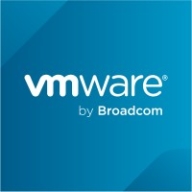

Freshservice and VMware Tanzu CloudHealth compete in the IT service management and cloud management sphere. VMware Tanzu CloudHealth has an upper hand due to superior cloud cost management features.
Features: Freshservice offers ease of use, incident management, and integration capabilities. It supports ITIL implementations and provides a polished help desk setup with a mobile app, analytics, and asset tracking. VMware Tanzu CloudHealth delivers cloud cost management and transparency with performance optimization, offering visibility in multi-cloud environments.
Room for Improvement: Freshservice needs enhanced reporting customization, workflow configurability, and streamlined project management. Users also wish for better chat support and compatibility with Linux systems. VMware Tanzu CloudHealth requires deeper insights and better integration with Google Cloud Platform, alongside improvements in technical support and billing processes.
Ease of Deployment and Customer Service: Freshservice provides flexible deployment options involving public and private clouds and is noted for responsive customer service, though there are occasional support delays. VMware Tanzu CloudHealth is primarily cloud-deployed, offering satisfactory support but needing better communication and reliability.
Pricing and ROI: Freshservice is affordable with flexible licensing, yielding satisfactory ROI due to its IT service management capabilities. VMware Tanzu CloudHealth is more expensive but is valued for its pricing relative to cloud management solutions, offering ROI through cloud resource optimization.
| Product | Market Share (%) |
|---|---|
| Freshservice | 0.5% |
| VMWare Tanzu CloudHealth | 1.9% |
| Other | 97.6% |


| Company Size | Count |
|---|---|
| Small Business | 20 |
| Midsize Enterprise | 3 |
| Large Enterprise | 12 |
| Company Size | Count |
|---|---|
| Small Business | 4 |
| Midsize Enterprise | 2 |
| Large Enterprise | 4 |
Freshservice is an intelligent, cloud-native service management solution. It provides efficiency and agility through AI to create a contextual and intelligent experience. The solution also empowers employees to work whenever and wherever they need to work. Freshservice powers integrations and workflows at the enterprise scale, building upon an open platform and marketplace with connectors and APIs that you can extend and customize.
Freshservice Features
Freshservice has many valuable key features. Some of the most useful ones include:
Freshservice Benefits
There are many benefits to implementing Freshservice. Some of the biggest advantages the solution offers include:
Reviews from Real Users
Below are some reviews and helpful feedback written by PeerSpot users currently using the Freshservice solution.
A Senior Helpdesk at a non-profit says, “I like the workflow automation capabilities, where based upon certain actions, it will automatically go and route tickets to a particular person. It is fairly user-friendly.”
PeerSpot user Cesar Q., CIO at Grupo Kasto, mentions, “The analytics are very good. The solution offers very nice incident management. The overall functionality of the product is excellent. The change management is helpful. They have an agent that we installed in every single asset. We have the inventory for all assets automatically. Contract management is very valuable for us as an IT department, as we have the information for every single computer across the company. We are starting to use the project management aspects right now. We have different projects and we have all the information in the same solution, in the same place. It makes everything more centralized and easier to access. The user interface is very nice and the solution is easy to use. You don't need to be an expert in order to navigate around and use the product. You don't need to read a lot of manuals in order to figure everything out. It's pretty intuitive.”
A Network Analyst at a real estate/law firm shares, "We find its ability to track what's going on with each request very valuable. We are also able to merge ticket requests and assign them to different groups in the company. We have another department that uses the same system."
VMware Tanzu CloudHealth, formerly known as VMware Aria Cost Powered by CloudHealth, is a specialized cloud management platform tailored for Multi-Cloud Cost Optimization. It offers comprehensive visibility into cloud spending across various providers, enabling users to identify areas for optimization and make informed resource allocation decisions. With features like reserved instance management, resource rightsizing, and automated cost governance policies, it facilitates financial management for optimal cost efficiency. Beyond cost optimization, Tanzu CloudHealth enhances cloud operations through workload optimization and governance automation, catering to multi-cloud environments encompassing public, private, and hybrid clouds. Its primary focus remains on enabling organizations to effectively manage and reduce cloud expenditures while supporting operations across diverse cloud platforms.
We monitor all Cloud Management reviews to prevent fraudulent reviews and keep review quality high. We do not post reviews by company employees or direct competitors. We validate each review for authenticity via cross-reference with LinkedIn, and personal follow-up with the reviewer when necessary.